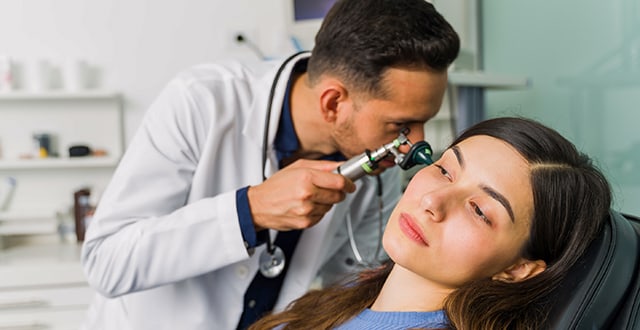Employers do a lot of heavy lifting to help ensure that they have happy, healthy employees and a productive workplace. If you are tasked with responsibilities in this area, comparing and selecting coverage options to build a robust benefit package that supports employee total health likely tops your list. When you compare health insurance coverage, there’s a lot to consider. If you aren’t factoring oral health into your plan, it might be time to reevaluate your approach to employee total health. Oral health is a must-have in your benefit blend because of its potential to empower employee total health.
Early signs of a more serious health condition
Oral health issues go much deeper than an attractive smile. When your employees’ oral health is poor, their overall health and quality of life can follow suit. There are many oral health conditions that can affect both. Cavities, severe gum disease, and severe tooth loss are in the top three—all of which can potentially be prevented or detected and treated early with regular dental visits.[1],[2]
A routine dental visit means more than a tooth cleaning. As critical as this service is, it is only one part of a dental visit. “Dental health providers play a key role in oral health and total health due to their close ties. Not only do we clean teeth and screen for oral health conditions, but we also look for signs that could indicate more serious health issues,” said Martinna Bertolini, DDS, MSc, PhD, who is an assistant professor in the Department of Periodontics and Preventive Dentistry at the University of Pittsburgh School of Dental Medicine.
“During an exam, we not only look for periodontal disease signs and dental cavities, but also other possible manifestations of systemic conditions. Periodontal disease, for example, has been linked to various health conditions, including diabetes, obesity, eating disorders, liver disease, cardiovascular disease, Alzheimer's disease, adverse pregnancy outcomes, and even cancer. In susceptible patients, these factors can trigger the onset of both periodontal and systemic diseases. Thus, we also look for changes in the mouth that could signal a more serious health issue as they might first show signs in the mouth” Dr. Bertolini added.
Those who don’t get regular dental care put a lot at risk. Not only do untreated oral health conditions compromise oral health and overall health, but they can also be detrimental in other areas. Pain and infections resulting from oral disease may lead to increased chances of tooth loss, leading to issues with eating and speaking, and can also lower self-esteem and work attendance.[3],[4]
The tie between chronic conditions and oral health is a two-way street. Chronic health conditions like heart disease, rheumatoid arthritis, obesity, and poorly controlled diabetes, among others, may increase the risk of periodontal disease and tooth loss, leading to inadequate oral health.[5] Improving oral health care can potentially help with diabetes management, as treating periodontal disease significantly improves blood sugar levels in people with diabetes compared to those who have not had treatment or routine care.[6]
The treatment for these oral and systemic conditions can be costly and continue to pose negative downstream economic outcomes. According to information shared by the Centers for Disease Control and Prevention, annual dental expenditures for adults with diabetes have topped the $1 billion mark in recent years.[7]
How offering dental coverage benefits employers
Dental coverage can support employee total health and other areas across your organization.
When you provide employees with an easy and affordable way to access oral health care, you provide them a way to support their total health. This is valuable because indirect costs of poor health, including absenteeism, disability, or reduced work output, may be several times higher than direct medical costs.[8] Improving oral health coverage can also lower overall benefit costs.
“You can’t underestimate the merit and measure of offering dental coverage to your employees. Access to oral healthcare professionals opens the door to good overall health and wellness and for those who may need extra support or education, the resources are invaluable. Routine checkups and dental visits helps those who already have good oral health keep their mouth, teeth and supporting structures in the best possible clinical condition,” said Richard M. Celko, DMD, MBA, UPMC Health Plan’s Chief Dental Officer and Adjunct Assistant Professor at the University of Pittsburgh School of Dental Medicine.
Dental coverage can also play a role in turnover and talent acquisition, according to Dr. Celko. “Simply put, employees want and need comprehensive coverage for themselves and their families. The costs for everything that families need is at an elevated level, which can put them in a position to make difficult choices like going without dental care. If employers do not offer dental insurance with solid coverage options, you may lose good employees to companies that offer more robust plans" he said.
What UPMC Health Plan has to offer
UPMC Dental Advantage sits alongside our other high-quality medical and other ancillary offerings. You can choose from provider organization (PPO) plan designs, each with a vast network of providers, and purchase it as a standalone benefit or integrate it with your UPMC Health Plan medical coverage. Plus, it is designed to encourage regular preventive care, which can empower employees to take control of their oral health and their total health.Connect with us
Find out more about ancillary benefits offered by UPMC Health Plan.
Contact your producer or call your account manager.
[1]Oral health fast facts. Centers for Disease Control and Prevention. Reviewed Jan. 25, 2021. Accessed March 22, 2024. cdc.gov/oralhealth/fast-facts/index.html
[2]Urban-rural differences in dental care use among adults aged 18−64. Centers for Disease Control and Prevention. Reviewed July 7, 2021. Accessed March 22, 2024. cdc.gov/nchs/products/databriefs/db412.htm
[3]Oral health fast facts. Centers for Disease Control and Prevention. Reviewed Jan. 25, 2021. Accessed March 22, 2024. cdc.gov/oralhealth/fast-facts/index.html
[4]Basics of oral health. Centers for Disease Control and Prevention. Reviewed Jan. 4, 2023. Accessed March 25, 2024. cdc.gov/oralhealth/basics/index.html
[5]Adult oral health. Centers for Disease Control and Prevention. Reviewed Dec. 22, 2020. Accessed March 22, 2024. cdc.gov/oralhealth/basics/adult-oral-health/index.html
[6]Diabetes. Centers for Disease Control and Prevention. Nov. 15, 2022. Accessed March 25, 2024. cdc.gov/oralhealth/fast-facts/diabetes/index.html
[7]Ibid.
[8]Worker productivity measures. Centers for Disease Control and Prevention. Reviewed April 1, 2016. Accessed March 25, 2024. cdc.gov/workplacehealthpromotion/model/evaluation/productivity.html


